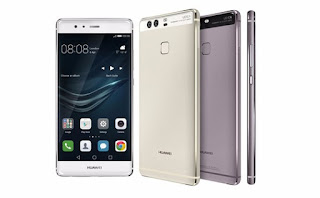2016 was
the year of selfies, people are so obsessed with taking photographs and selfies
that the first thing they look in any smartphone is the camera and its picture
quality. With other top quality features, Huawei’s innovative camera technology
is making customers fall in love with the P9 series’ “professional photographic
effects” including “artistic black and white images.” Announced back in April
of this year, it is being reported that Huawei has sold over six million units
of their flagship P9 smartphone. Before that Huawei declared selling of
2.6 million units of the Huawei P9 and P9 Plus combined, and that too, within
the first six weeks of release. For year 2016, P9 could be Huawei’s take on a
mainstream flagship device.
Talking
about the specifications of P9, available in Black color, this solid and sturdy
gripping smartphone is a 5.2-inch with 1080p resolution IPS LCD panel. Powered
by the Hi-Silicon Kirin 955 System-on-Chip, which is a modern,
64-bit, LITTLE processor with a lower performance quad core cluster of ARM
Cortex-A53 processors clocked at up to 1.8 GHz matched up to a higher
performance quad core cluster of ARM Cortex-A72s, clocked at up to 2.5 GHz. The
32 GB model backs this up with 3 GB of RAM and the 64 GB model comes with 4 GB
of RAM, but both use the ARM Mali-T880 MP4 GPU. There’s a fast charging 3,000
mAh battery complete with a USB Type-C port and the usual plethora of radios
including Bluetooth 4.2, LTE and high speed Wi-Fi.
As for
the camera, there is a front facing, 8-megapixel unit and two rear facing
12-megapixel cameras. The arrangement for rear cameras was co-designed with
Leica. One 12-megapixel camera unit is a reasonably conventional unit and the
second is monochrome only, lacking the Bayer filter, used in color cameras. The
monochrome camera can capture up to three times more light than the color
sensor making it ideal for nighttime photography.
As Huawei have proven through time,
they know how to make a good smartphone. Huawei was pretty pleased with the
fact that they could make a smartphone as thin as the P9 is (6.95mm thick) and
include not just a 3,000 mAh battery, but also keep the camera flush with the
casing. The rest of
the device is also impressive and highlights that Huawei, using many in-house
components, can produce a great smartphone that competes with the industry
regulars.



No comments:
Post a Comment